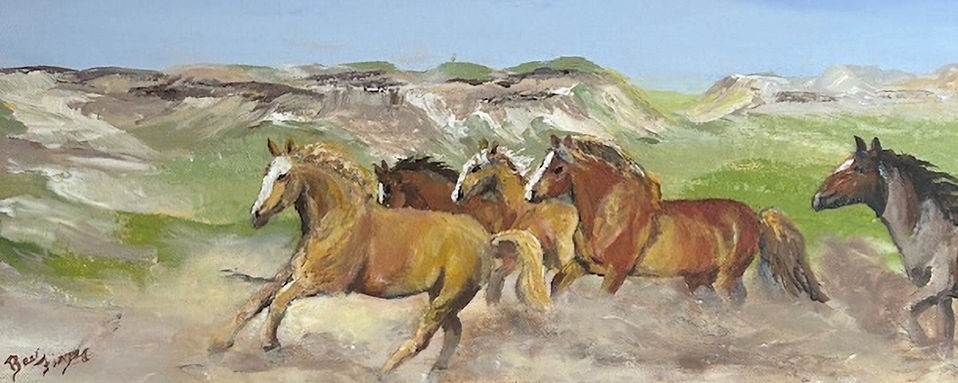
Process of Painting with Acrylics

Acrylics have been around since the 1940’s, but until a few years ago hadn’t gained popularity with artists nor collectors. New improvements to the medium have changed all that. They are permanent and do not yellow with age as do oils. Being water-soluble, they are fast-drying and require no harsh solvents for dilution or cleaning.
My painting process begins by first giving the canvas an overall tone, usually using a muted earth color such as yellow ochre or burnt sienna. This eliminates a scary white blank canvas. It can also help achieve a harmonious painting. Sometimes a fleck of under tone will appear through the next layer of paint which may work to my advantage. Not true if flecks of white canvas are peeking through here and there across the painting!
As I travel, my camera is clicking throughout the trip capturing inspiration, subject material and mood lighting. Once back in the studio, I have reference photos to work with and though I never paint anything the same as the photo, I develop a composition from one or maybe even two or three photos…moving and placing objects for best layout or leaving something out entirely if not necessary to “the story” and the mood I wish to portray.
I sketch the composition with a charcoal stick and then, if satisfied, I seal the drawing. The charcoal sketch is easily seen through the next layer of paint until I’m ready to lose the lines. I color block in big shapes and main values (darks & lights), remembering to never forget from which direction the sun is coming from within the painting. I first paint objects simply with basic light side (sun) and dark side (shadows). I continue to add smaller shapes within the big shapes – basically like puzzle pieces.
My style of painting seems to be a mix of realism blended with a representational, impressionistic style…and I am always attempting to achieve a painterly, loose affect while maintaining control of the subject matter. I like to layer the paint and use surprise touches of colors for pop and to bring color unity across the piece. I might paint in thin, transparent and watercolor-like washes whereby I am able to create soft edges without blending. Remember Acrylic paint is very fast drying, so if an area dries to a hard, undesired edge, then another layer is added in that area to allow a transparent smudging over the color next to it. To keep the paint moist and buttery I use a palette box with a Sta-Wet sponge under the palette paper, spray misting as needed. The palette box is nearly air tight when covered so keeps my paint puddles usable for several weeks. I try to apply paint rapidly so that I can work wet-in-wet, blending colors along the way.
I love my acrylics! Once I became used to the quick drying issues, I relaxed and enjoyed the “happy little accidents” that would appear before my eyes. In fact, those surprising “accidents” can lead to new creative directions and add a spontaneity to the painting that is difficult to learn and achieve. The quick drying time also allows me to revisit areas that need attention or changes sooner rather than later. Fast drying Acrylics aren’t super flexible when it comes to painting outdoors in hot sun and windy conditions, insects or other annoying distractions. Therefore, I cannot call myself a Plein Air painter, but perhaps my approach may be similar.
In the 70’s when I first began painting I used oils. I was commissioned to paint two large murals (4’x8’ and 3’x5’). During these longer sessions of working on the murals I found I was allergic to turpentine and mineral spirits so ended up finishing them outdoors. It turned out that it was a blessing in disguise! I was forced to convert from oils to acrylics.